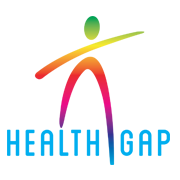The COVID-19 outbreak is causing significant concern worldwide and especially within the Pulmonary Hypertension (PH) community. The Pulmonary Hypertension Association (PHA) has prepared these Frequently Asked Questions (FAQ) to address many of the questions and concerns that we have heard from the PH community regarding COVID-19. This includes information from Centers for Disease Control and Prevention (CDC) on the risk to people with underlying health conditions and the steps you can take to protect yourself and your family.
Please call your PH physician or care provider if you are feeling unwell or have further questions.
Q: Are people with PH at greater risk for COVID-19 virus infection?
A: According to the CDC, there is no evidence to suggest that people with underlying health conditions are at higher risk of becoming infected with the COVID-19 virus. However, there is evidence that people with underlying health conditions, including all types of heart and lung diseases, have a higher risk of developing serious illness from the COVID-19 virus if they become infected.
Q: What safety precautions should I take as a PH patient?
A: These are challenging times and require some rethinking of approaches to daily living. Individuals should consult their PH health care teams with specific questions about personal health risks and safety.
The CDC has provided guidelines for people who are at higher risk. PHA recommends that you check the CDC website frequently for the most current guidelines. The CDC guidelines include:
-
- Stay at home as much as possible to reduce your risk of being exposed.
- Avoid crowds.
- Take everyday precautions:
- Keep space between yourself and others. It is recommended to keep at least 6 feet apart from others. Avoid large crowds or heavy traffic areas.
- Limit close contact to other people who are sick.
- Frequently wash your hands with soap for at least 20 seconds or use hand sanitizer with at least 60% alcohol content.
- Avoid touching your face, especially your eyes, mouth and nose.
- Avoid all non-essential travel, even short trips.
- The CDC currently recommends covering your mouth and nose with a cloth face cover when around others. Everyone should wear a face covering in public settings such as the grocery store or pharmacy.
- Cloth face coverings should not be used on young children under 2 years old, anyone who has trouble breathing or is unconscious, incapacitated or otherwise unable to remove the mask without assistance.
- The recommended face coverings are not surgical masks or N-95 respirators, which must continue to be reserved for health care workers and other first responders.
- The CDC provides instructions on how to wear face coverings, how to make homemade cloth face covers, how to safely remove a used face cover and how to safely clean cloth face covers.
- Continue to keep 6 feet between you and others. The cloth face covers are not a substitute for social distancing.
People with PH and those close to them should continue taking precautions to keep themselves healthy and follow the CDC’s guidance for those at higher risk.

